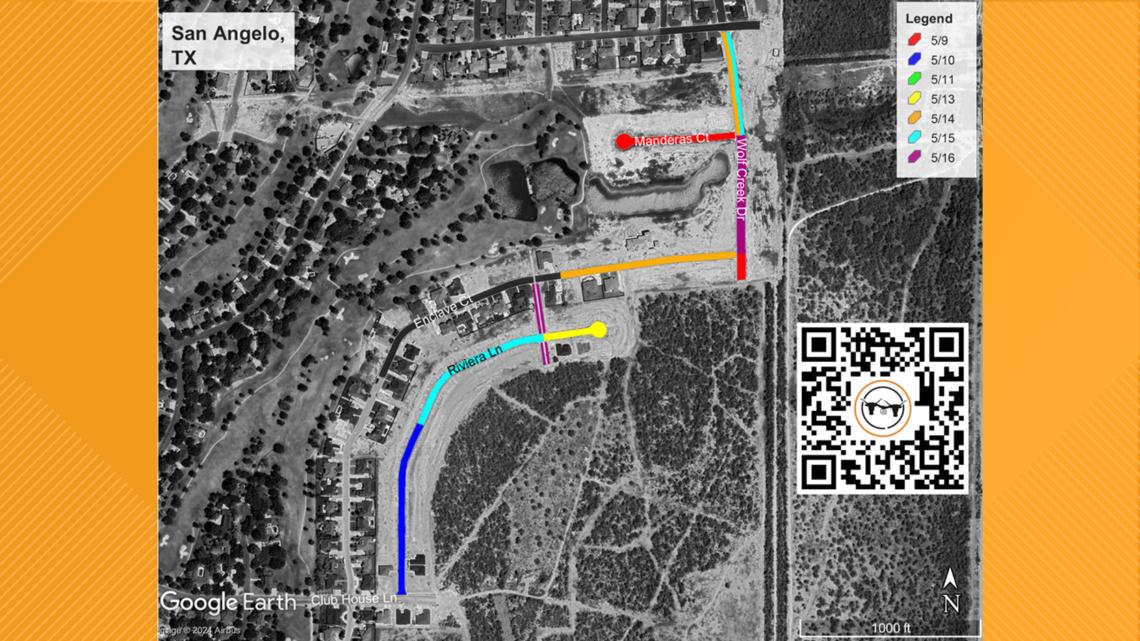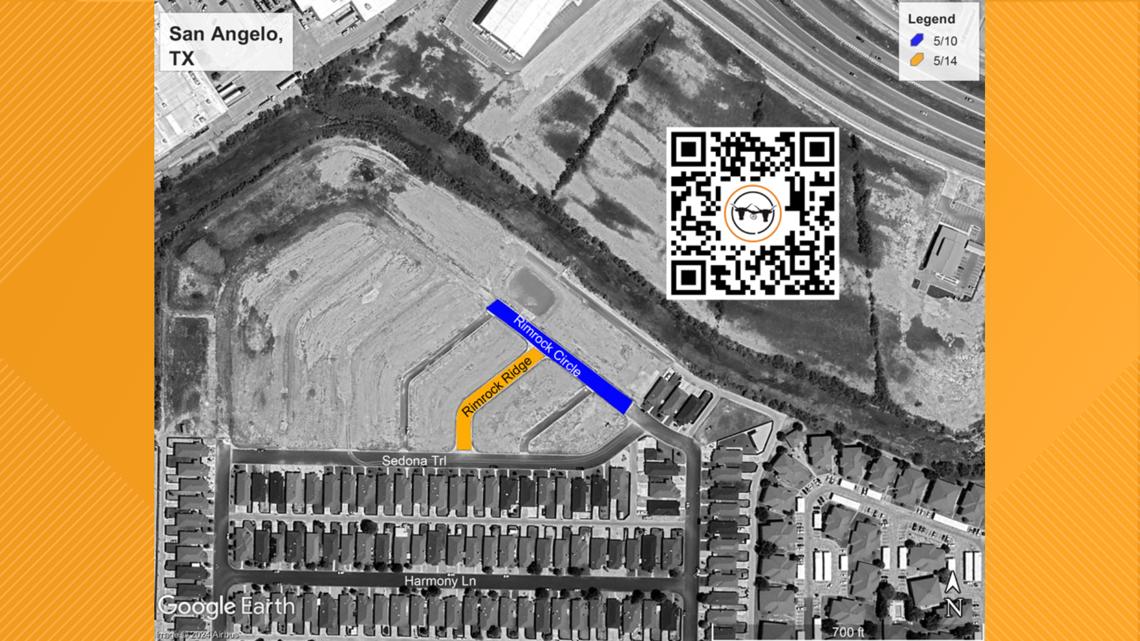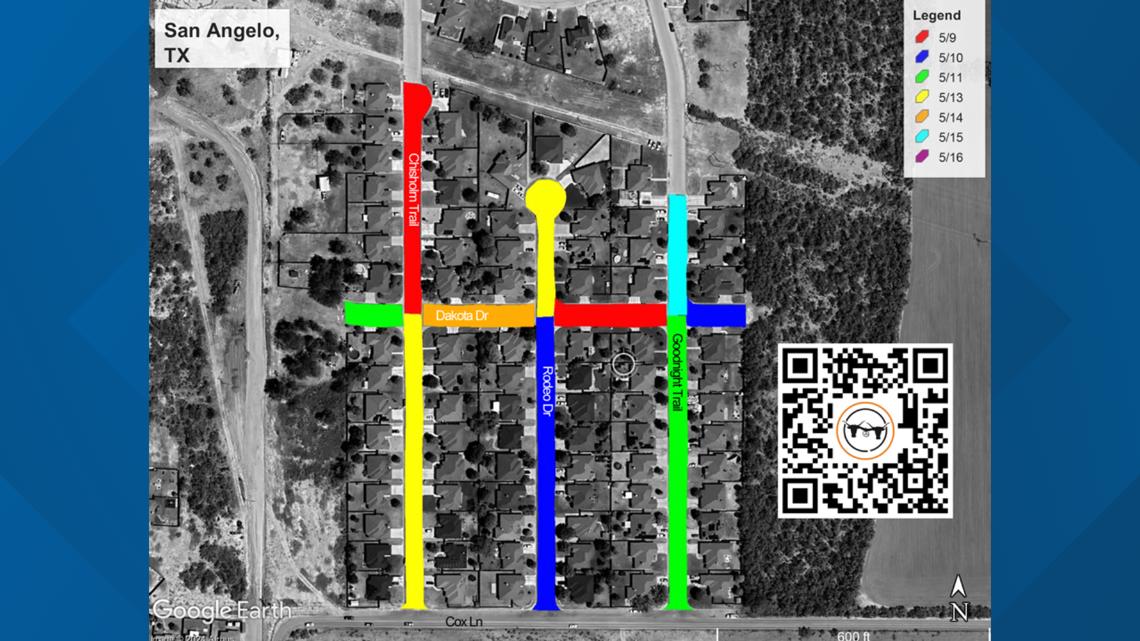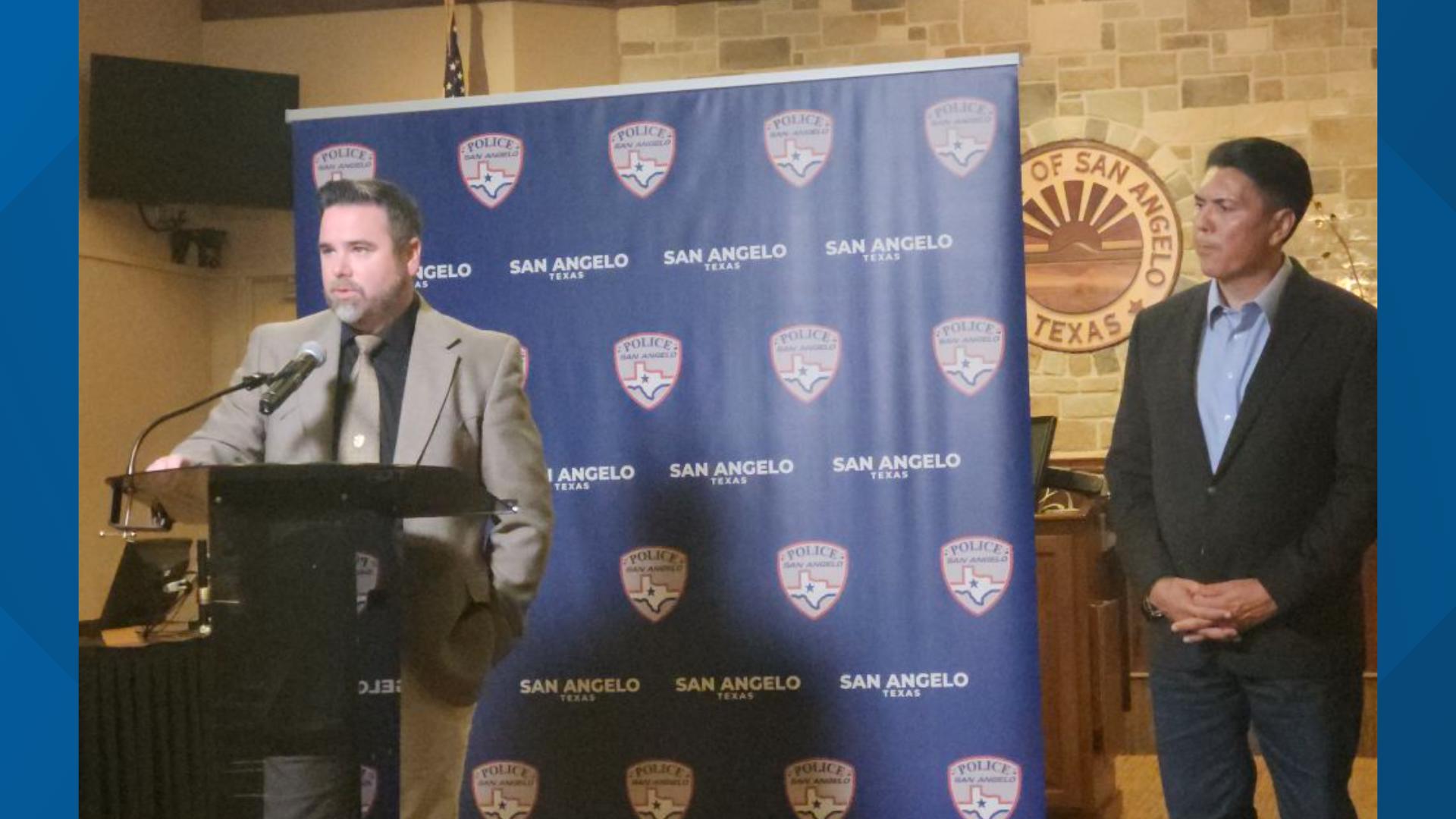SAN ANGELO, Texas — Some streets in southwest San Angelo will be affected by the City's 2024 HA5 street maintenance project from May 9-16.
The affected streets will close at 7 a.m. before work starts and will stay closed for 24 hours after HA5 application. Flyers have been distributed to homes in the area to notify them about the upcoming work by contractor Andale Construction.






Residents who would like to be notified about road closures can text PRESERVATION to 77222 or visit HA5info.com/sanangelo.
The City said once HA5 is applied, it cannot be driven on for 24 hours. Roads close will close at 7 a.m. with vehicles allowed to exit the area up until 7:30 a.m.
Andale Construction will provide a shuttle service to carry residents from their vehicles to their homes, if necessary. Street access for residents is only prohibited for the 24 hours after HA5 is applied in front of their homes.
Weather or other factors could change the days of specific applications. Check HA5info.com/sanangelo for maps and any updates on the project.
COSA says it’s important for residents to cut off sprinkler systems on their respective days because HA5 cannot be applied to roadways that are wet from sprinkler overspray or runoff.
Vehicle parked on the street during the application time will be towed out of the construction zone by Home Motors, then returned to the original location after the HA5 cures at the City's cost.
HA5 is a surface treatment limiting oxidative damage on asphalt from moisture and UV radiation. It is inconvenient, but the City says the benefits HA5 provides are considerable because streets treated with HA5 rather than sealcoat are cleaner, quieter, smoother and maintain their aesthetic black color for up to an average of eight years.
HA5 serves two primary functions when applied to a roadway:
- It seals the roadway to prevent moisture from penetrating into the street’s base.
- The product acts like a sunscreen and protects the street from oxidation from the sun’s UV radiation.
This treatment is ideal for roads with minimal wear and cracking. Utilizing this method is part of an effort to change the City’s focus from a reactive/repair-focused operation to a proactive/preservation operation.



